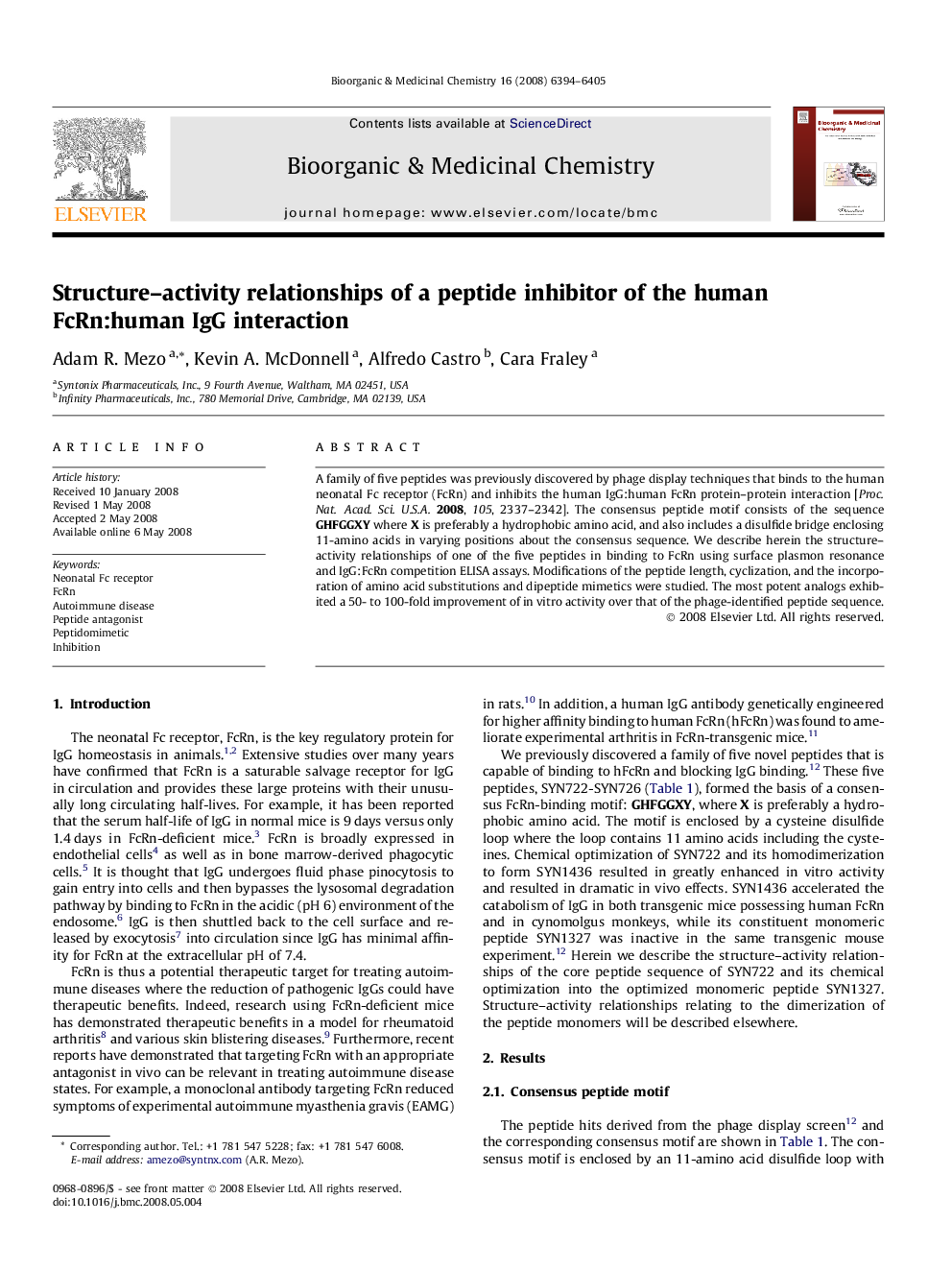| کد مقاله | کد نشریه | سال انتشار | مقاله انگلیسی | نسخه تمام متن |
|---|---|---|---|---|
| 1360584 | 981441 | 2008 | 12 صفحه PDF | دانلود رایگان |

A family of five peptides was previously discovered by phage display techniques that binds to the human neonatal Fc receptor (FcRn) and inhibits the human IgG:human FcRn protein–protein interaction [Proc. Nat. Acad. Sci. U.S.A.2008, 105, 2337–2342]. The consensus peptide motif consists of the sequence GHFGGXY where X is preferably a hydrophobic amino acid, and also includes a disulfide bridge enclosing 11-amino acids in varying positions about the consensus sequence. We describe herein the structure–activity relationships of one of the five peptides in binding to FcRn using surface plasmon resonance and IgG:FcRn competition ELISA assays. Modifications of the peptide length, cyclization, and the incorporation of amino acid substitutions and dipeptide mimetics were studied. The most potent analogs exhibited a 50- to 100-fold improvement of in vitro activity over that of the phage-identified peptide sequence.
Figure optionsDownload as PowerPoint slide
Journal: Bioorganic & Medicinal Chemistry - Volume 16, Issue 12, 15 June 2008, Pages 6394–6405